Introduction
The life of a diver highly depends on the diving gear, particularly the procedure of ensuring every part of a scuba gear is in the required conditions before the activity. It is also important to ensure quality of the gear and the people understand the procedure of using the materials during diving. The scuba diver’s life vastly depends on the equipment, and the sport is entirely equipment-dependent.
If the gear fails, even an experienced scuba diver is in deep trouble due to the possible dangers. This essay forms a manual about scuba diving, explanation on the technical procedures of combining some parts of the equipment, importance of the parts, differences and usage. The manual also tries to answer common queries raised concerning this recreational activity.
Scuba Diving Gear
Scuba Masks
It forms the interface between the underworld and the diver. It is therefore extremely important that the equipment be personal and of best fit. Before diving, the mask has to be well garbed in place, levelled, accurately fit and defogged to ensure good visibility underwater.
Unlike other masks such as the industrial mask, scuba masks are quite different since they are customized for the deep diving and underwater atmospheres. Unlike snorkelling masks that are designed for surface water sports, which are made of plastic lenses, materials used on most scuba masks include silicon as well as a tempered glass that is tough enough to overcome fogs or scratches.
The main purpose of the mask is to enhance better vision underwater, but it also acts as a gear that prevents water from the diver’s nostrils. Vision is quite vital underwater since it enables the diver to read a pressure gauge and hand signs or gesture communication.
According to Crockett, various scuba masks are available in the market, including the one, two, or side window masks, wide field vision masks, purge-valve masks, optical lensed masks and silicon coloured masks (34).
All masks in the market are quite different in design to accommodate diverse fits for different facial shapes. It is thus advisable for any buyer to try all the available shapes before deciding a purchase. The mask has various parts as illustrated on the diagram below.
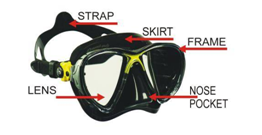
Figure 1: Parts of Scuba Mask
The lenses are made from tempered glass as opposed to plastic to prevent easy scratching or fogging. The skirt of the mask is also made of pliable solid from silicon as opposed to plastic. Silicon is more flexible and softer, thus provides a better seal on the diver’s face any prevent water from getting into the eye.
- While trying the mask,
- Hold the mask against the face, with the nose in the pocket provision.
- Ensure the skirt lies flat on the skin without folds
- Confirm the skirt presses well on cheeks and temple.
- Carry out the test without pulling the strap over the head.
- Ensure the strap does not come between the face and skirt of the mask.
- Safeguard the hair to ensure it is not trapped in the mask.
A good fitting mask has a skirt that lays halfway between the mouth and bottom of the nose as shown on figure 2 below.
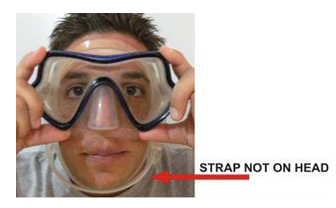
Figure 2: Testing the Best Fit before a Purchase
To check if the mask is of best fit,
- Inhale deeply and let go the mask.
A perfectly fitting mask must stick to the face without air leaks as shown on figure 3 below. Facial hair especially moustache may interfere with the tests but an application of petroleum or silicon jelly can be done to assist in sealing such areas prone to leaks (Crockett, 37).

Figure 3: Inhaling in the Mask to test for Best Fit
If the mask seals perfectly,
- Simulate the mouth position assuming presence of the regulator in the mouth during inhaling process as illustrated in figure 4 below.
This assists in ensuring mask remains in place even in the presence of a regulator in the mouth.
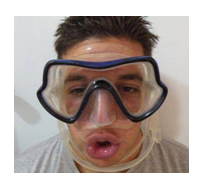
Figure 4: Mouth Simulation during Inhalation to find Best Fit
Being a gear that comes as a complete unit, the scuba mask is easy to have in place and adjust. The musk must first fit comfortably, but it is important that the diver ensure that the musk leaves very little airspace between the lenses and face. In line with Crockett, the closer the mask is to the face, the better the vision and the easier it is to equalize, adjust, prevent and clear fog (37).
While putting the mask on,
- Pull the strap over the head and
- Allow the strap to pass through over the ears like sunglasses
- Avoid placing the skirt above the hairline as illustrated in figure 5, to avoid leaks.
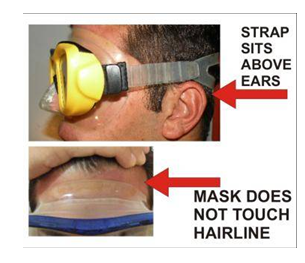
Figure 5: Putting the Mask On
During a fit, a mask that touches the bridge of the nose or the nose is in contact with the bottom of the mask, clearly indicates that water pressure may cause more pain during diving (Crockett, 47). Figure six shows some of the aspects a diver may find necessary to check on before settling for a best fitting mask.
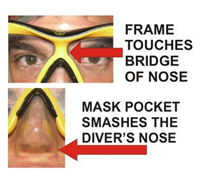
Figure 6: Checking the Tight Spots during Best Fit
Another simple check for a best fitting mask is by ensuring there is a comfortable way to pinch the nose closed by holding through the nose socket as illustrated on figure 7 below.
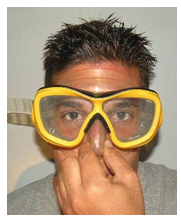
Figure 7: Pinching Nose through Pocket to check for a Best fit
A good mask must fit closely to the face; it leaves less air space between the face and lenses of the mask, thus providing an easier way of equalizing as shown on figure 7.

Figure 8: The Distance between the Lenses and face
Finding the mask’s area of vision
Upon fitting to the mast to what seems to be the right position,
- Roll the eyeball through all direction and find out whether all the fields of sight are visible.
- Ensure that the amount of light into the mask is comfortable.
The type of mask will determine the light regulation for instance the masks with dark silicon sealants provide less lighting, while those with clear seals allow more light into the mask. Checking all directions helps the diver to determine fitness of the mask and the diving needs.

Figure 9: Rolling the eye through all direction to ensure visibility after fitting
How Scuba Mask Enhances Visibility Underwater
Besides preventing blurred or distorted image, the mask is a vital gear for easy communication and clear vision in deep waters. Scientifically, the speed of light changes when it transfers from one medium to another (refraction of light), and during transfer from water and human lens in the eye, the change on the speed of light causes the diver to experience a blurry vision.
The scuba mask assists because it holds some air between the water and eyes, thus allowing for the normal transfer of light from air (trapped in mask), to lens of the eye. The light waves pass from water through the mask to air inside the mask and then to the eye. However, vision through the scuba musk is still slightly distorted, but is 33% bigger in comparison to the images viewed directly through water (Zitzewits 138).
Before a dive,
- Apply defogging solution on the inside of a mask, which prevents formation of fog.
- apply a little of this agent into the mask and rub around before a brief rinse with clean fresh water
- leave a thin layer of the agent inside the mask without rubbing off
Divers must understand there is humidity in the air. The diver often breathes some air into the mask thus adding humidity. Condensation of such moisture fog the glass since warm air fogs due to contact with the cold lenses of the mask.
The defogging agent breaks the bond between water molecules that form the fog on the inside of the mask. In line with Newman, some of the commercial defogging solutions are designed specifically for the mask (13). It is advisable to perform defogging before each dive. There are also numerous procedures of defogging, for instance use of toothpaste or flame to remove residue left after manufacturing.
How to clear water from a Scuba mask
It is important for a diver to have skills of clearing water from the scuba mask during a dive without the need to surface. Lack of such vital skills may cause nervousness. To clear the mask off water the diver need to follow the following procedure as illustrated in figure 10 below:
- First practice mouth or inhaling through the mouth and exhaling through nose especially if the water if felt entering the nostrils.
- Secondly, tilt the head downwards as a measure of trapping air in the nose, which in turn prevents water.
- Ensure the skirt of the mask holds firmly on the forehead by placing a strong grip on the frame of the mask or by spreading fingers along the edges.
- Keep head down to ensure water stays out of the nostrils.
- With the head tilted down, Inhale deeply through the regulator
- Exhale slowly but strongly through the nose
- Tilt head upwards gradually as you continue to exhale strongly through the nose
- The process need to last a couple of seconds. The exhaled air from the nose bubbles upwards into the mask, and forces the water out through the bottom of the mask.
- After performing the procedure, look down towards the floor and ensure that any water that may remain in the mask does not flow into the nose.
- Repeat the procedure until all the droplets are completely removed

Figure 10: Clearing Water from the Scuba Mask
The tight grip on the upper side of the mask ensures that exhaled air does not escape from the top of the mask. Tilting the head up during the exercise also ensures that the air is retained in the mask without flowing out through the bottom or the sides.
Properly skilled divers are able to clear mask fogs by letting in some water, directing the water to the lens of the mask by swishing where the fog is and clearing the water off the mask in the same way.
Scuba Diving fins
Divers have a wide variety of fins to choose from including the booties, spring-strapped, split, blade, and turtle beside open or close-heeled fins. According to Orr and Douglas, “Various fins have been designed for devious dives and various materials are used to maximize propulsion and minimize the kicking efforts” (26).
Types of Scuba Fins
Aqualung Blade
It is important to consider flexibility of fins. The aqualung blade fins shown in figure 11 below are very stiff and mostly preferred due to their enhanced feature of frog kicking to achieve better repulsion techniques for instance backing up turns.
The stiffness enables the diver to propel easily and further for each kick made in comparison to the flexible fins. However, the fins are cumbersome and continuous kicks can be extremely exhausting (Orr and Douglas 26).

Figure 11: Aqualung Stiff Blade fins
Closed-Heels Fins
They contain a packet made of rubber that covers the entire driver’s heel. According to Graver, the fins work extremely well without diver’s booties especially in warm water (31). Cold-water diver requires booties to overcome the harsh climatic conditions by keeping the feet warm especially during the on show dives.
Booties have a hard bottom to enhance easy movements over rough beaches, rocks, hot surfaces before a dive. “Booties also prevent blisters since they are high enough to strap the diver’s heals and prevent direct rubs against heels during a dive or walk” (Graver 31). Figure12 below shows an illustration of the water booties.

Figure 12: Scuba Booties
It is critical that a diver considers the style of strap for the open heeled fins. In line with William, “Standard straps are made of flexible rubber that easily loosened, tightened or unclipped for easy wear and removal” (18). Advanced straps have tight coils to fasten round the heel, which are more durable due to the metallic materials and are more comfortable, styled and easy to remove. Figure 13 below differentiates the two type of strapping.
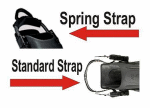
Figure 13: Spring and Standard Rubber Straps
Blade fins
Blade fins are designed with continuous rubber or plastic materials with various panels, contours and holes to direct water. The fins also provide divers with a more efficient and flutter kick.
The flexibility of the fins vary considerable and therefore are more appropriate for divers who wish to maintain a standard speed during a dive or wish to scuba dive through moderate currents (Bantin 11). Figure 14 below shows the differently styled blade fins.
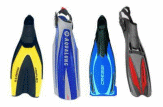
Figure 14: Differently Styled Blade Fins
The split fins
The split in the fin (figure 15) is meant to reduce the kicking efforts; therefore, the fins are preferable for the flutter kicking. There are also favourable among less masculine divers due to the reduced strain. They are more effective when there are fewer currents.
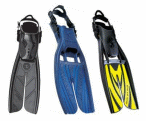
Figure 15: Split fins
Snorkelling Fins
The fins are easy to manipulate due to their sizes. They also provide the diver an easy way of balancing in shallow waters; however, they fail to provide adequate propulsion for scuba diving, this means that the diver has to compensate with faster and harder kicks (Bantin 37). Figure 16 below provides an illustration of the Snorkelling Fins

Figure 16: Snorkelling Fins
Turtle fins
The shape (short and stiff) and type of material gives them a more definitive design. They are more thick and heavier and work perfectly during the technical or advanced dives. A kick with the fins provides a more propelled effect but causes greater exhaustion. As seen on figure 17 below, the designs of these fins are simple but the equipment is still considered as one of the most effective fin.
Most stores still stock the classic version but with diverse styles. In line with Bantin, the technical diver prefers the fins due to the great repulsive force they provide, and the size is effective during navigation in compacted areas where there are dangers of kicking the ceiling (37).

Figure 17: Turtle fins
Free-diving Fins
As figure 18 below illustrates, the fins have very long, thin and stiff fins that make them very unfavourable among the recreational divers. The fins are preferable during frog and flutter kicks due to their long blades. Although most divers do not prefer these fins due to the involved technicality of manipulation, they provide easy, quicker and very strong repulsive movements.

Figure 18: Free-diving Fins
Coloured Fins
The colours come in handy during a dive where individuals are easy to locate and identify especially the brightly coloured one in poor visibility areas. Neon, orange, yellow, red, sky-blue are common bright colours as figure 19 below illustrates.

Figure 19: Coloured Fins
Innovative Fins
They are specially designed with elastic enhancements such as rubber to add effectiveness during a kick. Some have a gear shifting mechanism for adjustment during a dive in the aim of decreasing or increasing resistance (Bantin 37).
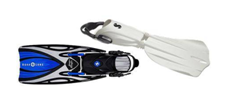
Figure 20: Innovative Fins
Snorkels
This is a safety equipment used together with the breathing regulators particularly when there are difficulties regarding keeping the head above the waves. The equipment is simply a bent tube with a mouthpiece attached at the bottom.
The side is attached to the scuba mask through a clip and the other end (top-tube) extending above the head to stick out of the water surface and form a provision for easy breathing when the head is completely submerged. The clip enables the diver to use the snorkel without need to hold it in place. Figure 21 below shows various parts of a snorkel.
The top of the equipment can be completely open, with a classic and easy to use design, but water splashing on the top drains directly into the mouthpiece. There thus more favourable in calm conditions, otherwise the diver is forced to clear water splashing into the open top (Bulenkov 7).
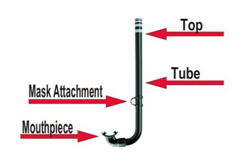
Figure 21: Parts of a Snorkel
Angled Snorkels
Slightly angled snorkels are better since they provide a drier top by preventing water from entering, unless when completely submerged. The top covering consists of vents angled to divert splashing water. Although the snorkels provide easiness of breathing, they are favourable in calm and less wavy conditions but are heavier at the top compared to the open tops.
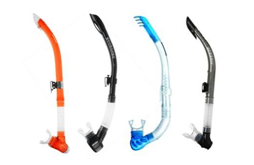
Figure 22: Angled Snorkels
Fully dry-top Snorkels seal water even when the diver submerges completely. The top is implemented with simple scientific mechanism of folds and valves. The system closes when a diver submerges thus eliminating need to clear water upon return to the surface.
If the diver is using a snorkel that does not incorporate purge valves as illustrated in figure 23, water can easily enter the tube. In such a case,
- Exhale powerfully to ensure water blows out through the top
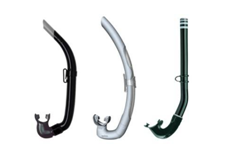
Figure 23: Snorkels without Purge Vales
The blowing cannot affect or break any part since the purge valve is absent. Unlike the snorkels with a purge valve at the base (illustrated in figure 24 below), those without the valve are very durable due to the simplicity. According to Bulenkov, Snorkels with valves are easier and faster to clear and are thus rapidly gaining the standardisation prominence in the market (8).
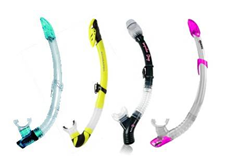
Figure 24: Snorkels with Purge Vales
Rigid Tube Snorkels
The rigid nature of this snorkels assist in maintains the tube’s shape thus prevents bending. The equipment can be comfortable to the user but it need to be of the right fit.
- Ensure best fit of the rigid tube snorkel during mask fitting exercise.
- Check the angle of inclination to ensure it does not leave big space
- A good angle fit is closer to the diver’s face.
Flexible Snorkels
They have corrugated plastic or silicon connection between the upper and bottom portions. They are easy to fit due to the flexibility. The flexibility come in handy during diving where the diver can replace the snorkel with the regulator and the mouthpiece hangs sideways away from destructing the diver. Figures 25 and 26 below show the differences between the rigid and flexible tube snorkels.
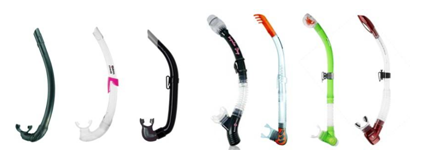
Figure 25: Rigid-Tubed Snorkels Figure 26: Flexible-Tubed Snorkels
Nautilus Snorkel
As figure 27 below illustrates, this snorkel is a flexible and easy to fit into a carrying case and can be stashed in the Buoyancy compensator pockets or left loose on the rings. Upon removal, the device springs open into shape. It may lack other critical features, but the flexibility makes the device a favourite for some divers.
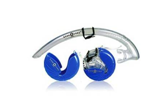
Figure 27: Nautilus Snorkel
Oceanic Pocket Snorkel
The Oceanic Pocket Snorkel is highly comparable to the Nautilus Snorkel, but it has a strapping to keep it folded when not in use. Oceanic pocket snorkel has a purge valve on top that is tougher, thus making it not fold to a small size like the Nautilus. Figure 28 below shows the oceanic pocket snorkel.

Figure 28: Oceanic Pocket Snorkel
The Mouth Pieces
According to Treinish, these are part of the snorkel that fits into the diver’s mouth and are made of soft silicon manufactured in diverse shapes for best fits as illustrated on figure 29 below (253). The diver must:
- Find the right type and size
- Check the styles for instance strapping for easy fits and comfort
- Decide the ease of clearing collected water
Most mouthpieces have a small reservoir extension to prevent water that drains into the tube from dripping directly into the diver’s mouth. The dive can still breathe with ease even when some water has collected in the snorkel. The reservoir thus provides easiness on usage and clearing collecting water (Treinish 254).
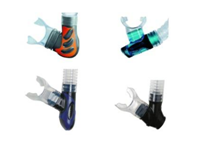
Figure 29: Various Mouth Pieces
Mask Connectors
The connectors that attach the snorkels to the masks are diverse depending on manufacturers, as illustrated below.
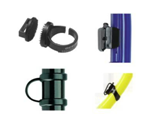
Figure 30: Various Mask Connectors on Snorkels
- Test for attachment and detachment before diving. If it works well in air, then it is good for diving.
- If they detach easily in air then hold to them during roll or a jump to avoid loss.
- Ensure that the connection allow easy movement of snorkel
One of the attachments uses a permanently mounted loop and a hook that provides a quicker way of detaching and attaching. Another has a hook that slides over the tube and provides a slower but ascertained way of attaching. The snorkel keeper has two loops made from plastic, which slides over the tube.
It is equally a slow mechanism but cannot be detached accidentally. Other connectors have adjustable clips attached to the snorkel.
Scuba Tanks and Regulators
Scuba tanks are mainly made from steel and aluminium to hold compressed air. Aluminium is lighter in weight but need to be designed with thicker walls to sustain the compressed air inside. Aluminium is also easily dented and scratched. On the other hand, steel tanks rust easily in presence of moisture.
- Perform periodical tumbling to remove oxidation from the inside of the aluminium tank
- Considers the scuba tank dry-weight (weight when empty) before a hiking any significant distances.
- Choose a low capacity tank during shallow diving and high capacity during longer deep diving or if you have high consumptions.
- Fill the tanks at reliable stations to ensure they are only filled with dry air.
- Avoid emptying the tank completely
- Take the tank for frequent tumbles to remove any rusts
- Ensure compressed gas tanks are or have been taken for a hydrostatic test. Check the test date
- Inspect tanks frequently especially at the neck threads for possible clacks that can cause gas leaks and loss.
- Check the type of regulator. Do you prefer DIN or Yoke?
- To determine the type of regulator, look for an O-ring at the valve attaching to the tank.
- If the O-ring is present, then the valve is a DIN otherwise, it is a yoke. Figure 31 show a DIN while figure and 32 a yoke regulator.

Figure 31: DIN Scuba Tank Regulator

Figure 32: Yoke Scuba Tank Regulator
Air consumption from a scuba tank during a dive
The support expectancy of air in a scuba tank depends on the diver’s consumption rate technically termed as “Surface Air Consumption Rate (SAC rate) or the Respiratory Minute Volume” (Leaird 43).
Divers with large lung volumes (tall and those with big BMI (Body Mass Index)) need more air that the short or petite persons. Other factors that determine consumption include diving experience levels /specialty on diving, stress, exercise done before a dive and ability to control buoyancy. To limit air intake and ensure consistent supply,
- Relax and practice slow and deep breathing patterns
- End the dive before reaching the air supply limit
- Calculate the no-decompression limit
- Plan and monitor the dive time
- Do not exceed the planned depth
- Avoid reaching the “no-decompression limit” during a dive
- Use “enriched air nitrox”
- Ascend with a friend who has reached the supply limit
- Have a contingency plan
Factors that determine durability of air in a scuba tank during a dive include:
- The tank volume
- Consumption rate
- The pressure of water
Buoyancy Control and Effects of Buoyancy on Divers:
- Inflate and deflate the “Buoyancy control Device (BCD)” to increase or decrease buoyancy respectively during a dive (Leaird 89).
- Use lead weights to descend and stay down as the scuba tank empties
Scuba Regulators
The regulator enables the diver to breath from the scuba tank during underwater dives. The equipment is called a scuba regulator because of controlling the amount of air the diver breathes. It is not possible to breath directly from the tank since the air is highly compressed (strongly pressured). The regulator reduces pressure from the tank to an intermediary section before its final regulation to the diver.
Parts of a Scuba Regulator
According to Bantin, the gear has various accessories but two main stages (68).
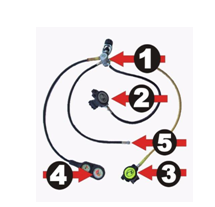
Figure 33: Parts of a Scuba Regulator
First point of regulation: Controls the air pressure by reducing it to an intermediate pressure point, through a low-pressure hose. As shown on figure 34 below, first-point regulator connects to four different hoses, three to the second point of regulation as well as the buoyancy compensator and one hose to the gauge.
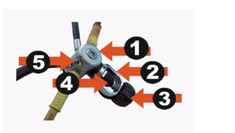
Figure 34: First Point of Regulation
- First-Stage Body
- Yoke
- Yoke Screw
- Dust Cap
- Port/Port plug
Second Point of regulation: Assists in providing the diver with an ambient pressurized air that is equivalents to surrounding pressure in air and water. It forms the safe breathing point for the diver. It attaches to the open water valve discussed earlier and thus acts as the other breathing-point/alternative during a deep dive.

Figure 35: Primary Second Stage Regulator
- Purge Button
- Ease of breathing regulator
- Exhaust valve
- Mouthpiece
An alternative second point of regulation: Forms a backup for the second point regulator. A diver can share air with a fellow diver during a deep-water dive through this point. This alternative point is today a standard safety diving console for a diver (Bantin 68).

Figure 36 Secondary Second Stage Regulator
- Mouthpiece
- Low pressure Hose
- Plunge button
- Air Adjuster
Submersible pressure scale and related console: It is a gauge for monitoring air usage during a dive to avoid run-outs. It connects to the first regulator through a high-pressure tube, and provides a point of reading direct pressure from the scuba tank. Other gauges that work in line with the pressure gauge include the depth gauge; computer console and diver compass (William 35).

Figure 37: Inflator Hose connector
- Sleeve
- Buoyancy Compensator opening
A low pressure inflating tube: According to Leaird, this is a critical low-pressure hose that assists in quick transfers of air from the first stage regulator to the “Buoyancy Compensator’s (BC) inflator” (42).

Figure 38: Submersible Air/Pressure Gauge
- Depth Gauge
- Submersible Pressure Gauge
Buoyancy Compensators (BCs/BCDs)
BCD is an inflated jacket that assists divers to experience and control neutral buoyancy. Common compensators are designed as vests or jackets, which connects the diver to the scuba tank during a deep dive. Other designs include the back wing that is often used during technical dives and the classic “horse collar” design. A sample design is illustrated on figure 39 below.
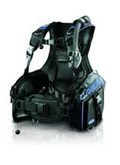
Figure 39: Buoyancy Compensation/Control Device (BCD)
How to use the buoyancy compensator
- Once in deep waters, add air to the buoyancy compensator in order to experience neutral buoyancy.
- Inflate the compensator completely to enjoy a surface dive with head above water
- Attach the scuba tank to the jacket scuba compensator, during recreational diving
- Attach the scuba dive accessories to the d-ring and pockets of the compensator for instance the torch/light, knife or slates.
Features of a Buoyancy Compensator to consider before a purchase
- Choose the style of inflating (back inflating or vest style) depending on experience and expected usage. Vest-style is easy to use and ensures easy floating, thus best suited for surface diving
- Squeeze the chest when the vest-styled compensator is fully inflated
- Choose the right lift required for a dive
- When using trim weight pockets of the compensator, distribute them accordingly to balance the swimming position
- Deflate the compensator from the standard locations whenever necessary
- As figure 40 below illustrates, the diver can deflate the compensator through the buoyancy compensator hose, but it should be raised towards the surface

Figure 40: Deflating a Buoyancy Compensator using its Hose
Scuba Dive Computer
It is a device for monitoring diver’s heart rates as a measure to manage workload. The digital huge display of the device enhances readability during a dive. The device also keeps track of the dive remaining bottom time (RBT), temperature, tank pressure, bearing for easy navigation during a dive and depth. The information is observable both during a dive and later since all information is committed to a logbook memory.
The diver is thus advised to
- Always upgrade the computer system software through the wireless or infrared interface
- Review the calculated deco data especially the gas mixes
- Check all the alarm warnings and text messages during a dive
Scuba Wetsuit
According to William, it is scientifically proven that water conducts heat away from the human body twenty times quicker than air (8). A wetsuit thus prevents water from cooling and eventually chilling the diver due to the mechanism of slowed heat loss. The suit also protects against scratches from the aquatic life such as corals. The wetsuit traps a thin layer of water against the skin and the water is heated to a temperature near normal.
Scientifically, “water conducts less heat away from diver than the cooler surroundings, thus keeping the body warm…” (William 7). Wet suits are made of neoprene, which is a material made from compressed air bubbles sealed in rubber. Before settling for a choice of suit,
- Wear a suit that fits properly to ensure trapped heat does not circulate off the body.
- Remember that wetsuit is not a sufficient gear to provide required warmth if the dive is lengthy or through extreme conditions (iced water).
- Ensure tightness of the suit for easy in trapping warmth, but also ensure easiness of breathing and blood circulation.
- Consider the thickness of the suit. Thicker suits are warmer
- Choose between the short or full wetsuits. Figure 41 shows the short and long wetsuits.

Figure 41: Short and Long Wetsuits
Conclusion
Although there are many related equipment associable with scuba diving as a recreational activity, figure 42 below illustrates some of the most critical items to think through before considering the sport.
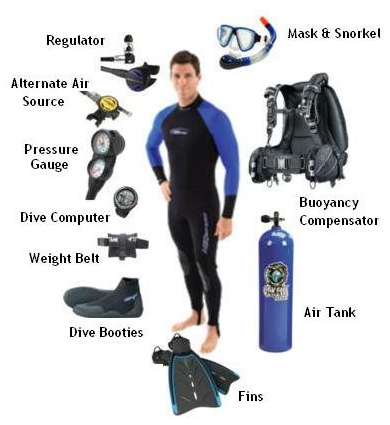
Figure 42: Basic Scuba Diving Equipment

Works Cited
Bantin, John. The Scuba Diving Handbook: The Complete Guide to Safe and Exciting Scuba Diving. Canada: Firefly Books, 2007. Print.
Bulenkov, Ye. Soviet Manual of Scuba Diving. Florida, FL: The Minerva Group, Inc., 2004. Print.
Crockett, Jim. The Why-To of Scuba Diving. Ney York, NY: Aqua Quest Publications, Inc. 2002. Print.
Graver, Dennis. Scuba Diving. Illinois, IL: Human Kinetics. 2010. Print.
Leaird, Tom. This Thing called Scuba. Indiana, IN: Xlibris Corporation, 2010. Print
Newman, John. Scuba Diving and Snorkelling for Dummies. New Jersey, NJ: John Wiley & Sons Ltd. 2011. Print.
Orr, Dan, and E. Douglas. Scuba Diving Safety. Illinois, IL: Human Kinetics. 2007. Print.
Treinish, Steve. Technical Rescuer: Water levels. Kentucky, KY: Cengage Learning, 2009.
William, Koelzer. Scuba Diving: How to get Started. New York, NY: Chilton Book Co. 1976. Print.
Zitzewits, Paul. The Handy Physics Answer Book. Michigan, MI: Visible Ink Press. 2011. Print.